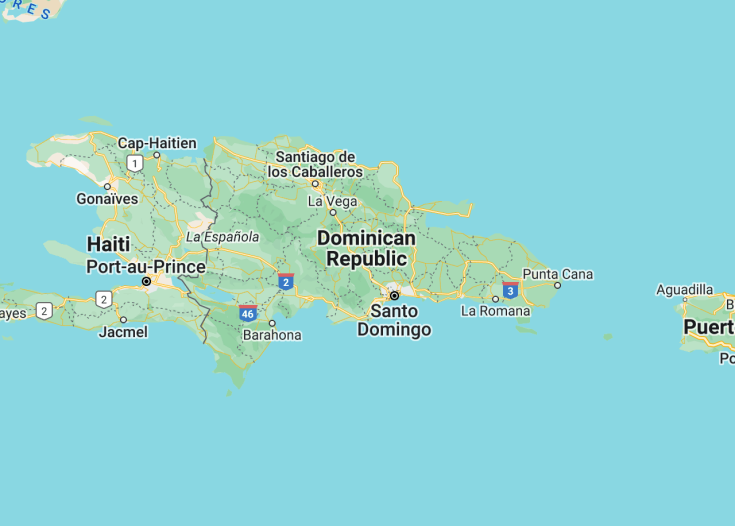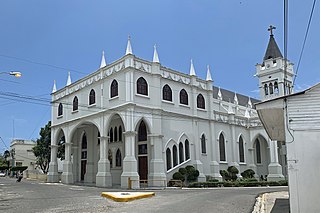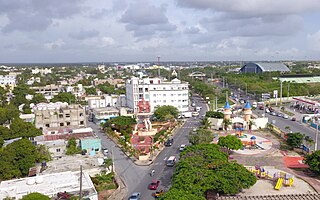In the heart of the Caribbean lies the enchanting destination of the Dominican Republic. This breathtaking country offers a fusion of stunning landscapes, vibrant culture, and warm hospitality that is sure to captivate travelers from around the world. With its white sandy beaches, azure waters, and lush mountain ranges, the Dominican Republic is truly a tropical paradise. Whether you’re exploring the historic neighborhoods of Santo Domingo, lounging on the pristine beaches of Punta Cana, or indulging in the vibrant nightlife of Cabarete, the Dominican Republic offers a wealth of experiences for every kind of traveler.
Don’t miss the opportunity to try the local cuisine, which is a delicious blend of Spanish, African, and Indigenous flavors.
For a truly unforgettable experience, take a trip to the beautiful Samaná Peninsula, famous for its stunning beaches and majestic waterfalls.
Dominican Republic: An Exquisite Caribbean Getaway
| Capital | Santo Domingo |
| Time in Dominican Republic | GMT-4 |
| Language spoken | Spanish |
| Population | 10,847,910 (World Bank, 2019) |
| Religion | Roman Catholic (57%), Protestant (24%) Evangelical (9%) None (4%) Other (6%) |
| Currency | Dominican Peso (DOP) |
| Airports | Las Americas International Airport (21 mi, 34 km) Punta Cana International Airport (117 mi, 189 km) Cibao International Airport (124 mi, 200 km) |
The Dominican Republic, located in the heart of the Caribbean, is an enchanting destination that offers a blend of stunning landscapes, rich history, and vibrant culture. With its pristine beaches, lush mountains, and diverse ecosystems, it is a paradise for nature lovers and adventure seekers.
The Dominican Republic is renowned for its warm and friendly people, known as “Dominicanos,” who are proud of their Afro-Caribbean heritage and Spanish colonial roots. This cultural fusion is evident in the country’s lively music, dance, and cuisine.
The country’s capital, Santo Domingo, is home to the oldest European settlement in the Americas. Its historic Zona Colonial is a UNESCO World Heritage site, featuring well-preserved buildings, cobblestone streets, and centuries-old churches.
Where is Dominican Republic located?
The Dominican Republic is located on the eastern part of the island of Hispaniola, which it shares with Haiti. It is bordered by the Atlantic Ocean to the north and the Caribbean Sea to the south. Its strategic position in the Caribbean makes it easily accessible from major international airports.
What is Dominican Republic famous for?
The Dominican Republic is famous for its breathtaking beaches, such as Punta Cana, Bavaro, and Juan Dolio, which attract sun seekers from all over the world. The country is also known for its vibrant merengue and bachata music, which can be heard at lively dance clubs and local festivals.
History
The history of the Dominican Republic started with the foundation of the city of Santo Domingo, which was established in 1496 by Bartholomew Columbus, the brother of Christopher Columbus and the governor of the island at the time. The Spaniards used Santo Domingo as a base for further exploration and colonization of the Americas.
(1496-1697) Spanish Colony
During the period from 1496 to 1697, the Dominican Republic was a Spanish colony known as Santo Domingo. It was the first permanent European settlement in the New World and served as the capital of the Spanish empire in the Americas. The city of Santo Domingo became a major center of trade, administration, and culture.
(1697-1795) French Interlude
In 1697, the Treaty of Ryswick was signed, which ceded the western part of Hispaniola, including the Dominican Republic, to France. This period, known as the French Interlude, saw the development of sugar plantations and the importation of enslaved Africans to work on them. However, tensions between the French settlers and the local population eventually led to the outbreak of a revolution.
(1795-1844) Haitian Rule
In 1795, the Dominican Republic came under the control of Haiti, which was then ruled by Jean-Jacques Dessalines. The Haitians abolished slavery and implemented a series of reforms aimed at improving the social and economic conditions of the island. However, their rule was also marked by conflicts and tensions with the Dominican population, which led to the Dominican War of Independence.
(1844-present) Independent Republic
The Dominican Republic declared its independence from Haiti on February 27, 1844. The country went through a period of political instability and economic struggles during the 19th and early 20th centuries. However, it also saw significant advancements in infrastructure, education, and social welfare. The Dominican Republic has since become a stable and prosperous nation in the Caribbean.
Visit Dominican Republic
What to see and do in Dominican Republic
If you are planning a trip to the Dominican Republic, here are some must-see attractions and activities:
- Explore the historic city of Santo Domingo and visit the Colonial Zone, a UNESCO World Heritage Site.
- Relax on the beautiful beaches of Punta Cana and enjoy water sports such as snorkeling and scuba diving.
- Visit the stunning national parks, including the Los Haitises National Park and the Jaragua National Park.
- Experience the vibrant local culture and music by attending a merengue or bachata dance performance.
- Take a boat tour to the secluded Saona Island and enjoy its pristine beaches and crystal-clear waters.
- Visit the Pico Duarte, the highest peak in the Caribbean, and go hiking or mountain climbing.
Events in Dominican Republic
The Dominican Republic hosts a variety of events and festivals throughout the year. The most popular events include:
– Carnival: The Carnival celebrations take place in February and March, featuring colorful parades, costumes, and music.
– Semana Santa (Holy Week): This religious festival takes place in April and includes processions, reenactments of the Passion of Christ, and traditional food.
– Merengue Festival: Held in July, this festival celebrates the country’s most famous music genre, merengue, with live performances by top artists.
– Independence Day: Celebrated on February 27th, Independence Day is a national holiday with parades, fireworks, and cultural activities.
Best time to visit Dominican Republic
The best time to visit the Dominican Republic is during the dry season, which runs from November to April. This period offers pleasant weather with warm temperatures and low humidity. It is also the peak tourist season, so expect larger crowds and higher prices. If you prefer to avoid the crowds and save money, consider visiting during the shoulder seasons of May to June or September to October. However, keep in mind that these months may experience some rainfall. Overall, the Dominican Republic is a year-round destination with consistent warm temperatures, so you can plan a visit at any time depending on your preferences.
Is Dominican Republic worth visiting?
The Dominican Republic is definitely worth visiting for its stunning beaches, rich history, and vibrant culture. The country offers a wide range of attractions and activities for all types of travelers. Whether you are interested in exploring the historic city of Santo Domingo, relaxing on beautiful beaches, or immersing yourself in the local culture, the Dominican Republic has something to offer. However, it is important to note that like any destination, the Dominican Republic has its challenges, including poverty and crime rates in certain areas. It is always advisable to exercise caution and follow safety precautions while traveling. Overall, the Dominican Republic’s natural beauty and cultural heritage make it a unique and rewarding destination for a memorable vacation.


















